
Sandavágur: A Hidden Gem in the Faroe Islands
Discover Sandavágur: A picturesque village in the Faroe Islands, offering stunning landscapes, historic sites, and a peaceful retreat amidst nature's wonders.
Sandavágur, a quaint village nestled on the island of Vágar, is a must-visit for anyone exploring the Faroe Islands. With a population of just over 800, this charming community offers a serene escape from the hustle and bustle of city life. The village is known for its picturesque landscapes, historic sites, and friendly locals. One of Sandavágur’s most notable attractions is the Sandavágur Church, a striking red-roofed building that dates back to 1917. The church is not just a place of worship but also a historical treasure, housing a rune stone from the 13th century. This stone is a testament to the village's long and storied past. Visitors can also enjoy stunning views of the surrounding countryside from the church grounds. For nature enthusiasts, Sandavágur offers numerous hiking trails that showcase the island's rugged beauty. The nearby Trøllkonufingur, or Witch's Finger, is a towering sea stack that provides a dramatic backdrop for your outdoor adventures. Bird watchers will be thrilled by the variety of seabirds that call this area home, making it a paradise for photographers. Sandavágur is also a great base for exploring the rest of Vágar Island. Just a short drive away is the village of Sørvágur, where you can catch a ferry to Mykines, an island known for its puffin colonies. The village’s location makes it easy to visit the famous Múlafossur Waterfall in Gásadalur, a sight that looks straight out of a fairy tale. Whether you're interested in history, nature, or simply soaking in the tranquil atmosphere, Sandavágur offers something for everyone. It’s a place where you can truly disconnect and immerse yourself in the natural beauty and rich culture of the Faroe Islands.
Local tips in Sandavágur
- Visit the Sandavágur Church early in the morning to avoid crowds and get the best light for photographs.
- Wear sturdy hiking boots for exploring the trails around Trøllkonufingur and other natural sites.
- Bring binoculars for bird watching, especially if you plan to visit during the seabird nesting season.
- Taste the local Faroese cuisine at one of the village eateries to get an authentic experience.
- Check the ferry schedule in advance if you plan to visit Mykines, as the weather can affect departure times.
Sandavágur: A Hidden Gem in the Faroe Islands
Sandavágur, a quaint village nestled on the island of Vágar, is a must-visit for anyone exploring the Faroe Islands. With a population of just over 800, this charming community offers a serene escape from the hustle and bustle of city life. The village is known for its picturesque landscapes, historic sites, and friendly locals. One of Sandavágur’s most notable attractions is the Sandavágur Church, a striking red-roofed building that dates back to 1917. The church is not just a place of worship but also a historical treasure, housing a rune stone from the 13th century. This stone is a testament to the village's long and storied past. Visitors can also enjoy stunning views of the surrounding countryside from the church grounds. For nature enthusiasts, Sandavágur offers numerous hiking trails that showcase the island's rugged beauty. The nearby Trøllkonufingur, or Witch's Finger, is a towering sea stack that provides a dramatic backdrop for your outdoor adventures. Bird watchers will be thrilled by the variety of seabirds that call this area home, making it a paradise for photographers. Sandavágur is also a great base for exploring the rest of Vágar Island. Just a short drive away is the village of Sørvágur, where you can catch a ferry to Mykines, an island known for its puffin colonies. The village’s location makes it easy to visit the famous Múlafossur Waterfall in Gásadalur, a sight that looks straight out of a fairy tale. Whether you're interested in history, nature, or simply soaking in the tranquil atmosphere, Sandavágur offers something for everyone. It’s a place where you can truly disconnect and immerse yourself in the natural beauty and rich culture of the Faroe Islands.
When is the best time to go to Sandavágur?
Iconic landmarks you can’t miss
Kirkjubømúrurin
Explore Kirkjubøur, the oldest village in the Faroe Islands, rich in history, stunning landscapes, and cultural heritage.

Múlafossur Waterfall
Discover the stunning Múlafossur Waterfall in the Faroe Islands, where nature's beauty meets dramatic cliffs and serene waters.
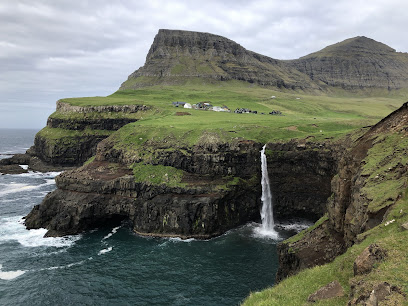
Gjógv Natural Harbour
Experience the breathtaking beauty of Gjógv Natural Harbour in the Faroe Islands, a serene escape for nature lovers and adventure seekers alike.

The Nordic House
Explore the Nordic House in Tórshavn, a cultural center showcasing Faroese heritage through art, performances, and delightful local cuisine.
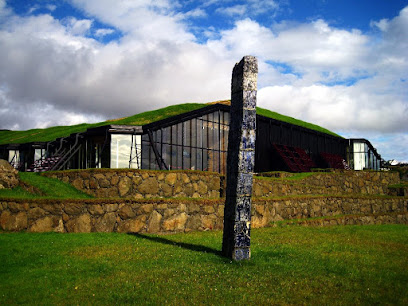
Skansin
Discover Skansin, a historic fortress in Tórshavn, offering stunning views, rich history, and an unforgettable experience in the Faroe Islands.

View on Mullafossur and Gasadalur village
Explore the breathtaking Mullafossur Waterfall and Gasadalur village, a scenic haven in the heart of the Faroe Islands, perfect for adventure and photography.

The Seal Woman (Kópakonan)
Explore the myth of Kópakonan at the stunning Seal Woman sculpture in Mikladalur, a captivating blend of art and Faroese folklore.

Trælanípa
Explore Trælanípa, a breathtaking cliff in the Faroe Islands, offering stunning views, rich wildlife, and a captivating hiking experience.

The National Gallery of The Faroe Islands
Explore the rich cultural heritage of the Faroe Islands at The National Gallery, where local artistry meets global inspiration in Tórshavn.

Tjóðsavnið (Faroe Islands National Museum)
Explore the cultural tapestry of the Faroe Islands at Tjódsvøttin, a national museum showcasing art, archaeology, and natural heritage.

Kallur Lighthouse
Explore the breathtaking beauty of Kallur Lighthouse in the Faroe Islands, where stunning views and rich maritime history await every traveler.

Slave Cliff (Lake Above the Ocean)
Experience the breathtaking beauty of Slave Cliff, a unique hiking area in the Faroe Islands featuring stunning cliffs and serene lakes.
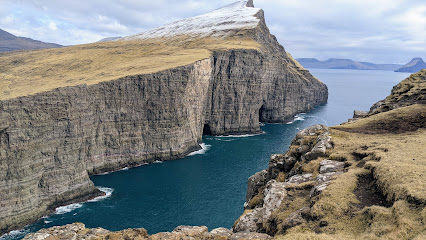
Bøsdalafossur Waterfall
Experience the breathtaking beauty of Bøsdalafossur Waterfall, a stunning natural attraction in the heart of the Faroe Islands, perfect for nature lovers and adventurers.
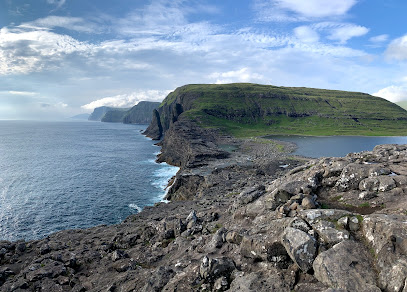
Giljanes Hostel & Campsite
Experience the beauty of the Faroe Islands from Giljanes Hostel & Campsite, your perfect base for adventure and relaxation.

Klakkur
Experience the breathtaking views and unique landscapes of Klakkur, a must-visit mountain in the stunning Faroe Islands.

Unmissable attractions to see
Múlafossur Waterfall
Experience the breathtaking Múlafossur Waterfall in Gasadalur, a stunning natural wonder cascading into the Atlantic, surrounded by lush landscapes.

View on Mullafossur and Gasadalur village
Discover the breathtaking beauty of Mullafossur Waterfall in Gasadalur, a must-see destination in the stunning Faroe Islands.

The Seal Woman (Kópakonan)
Discover the enchanting lore of the Seal Woman at this iconic sculpture in Mikladalur, where art meets breathtaking coastal beauty.

Kallur Lighthouse
Explore the scenic beauty of Kallur Lighthouse in Kalsoy, Faroe Islands, where breathtaking views and hiking adventures await every traveler.

Tjørnuvik Beach
Experience the breathtaking beauty of Tjörnuvík Beach, a hidden gem in the Faroe Islands known for its stunning cliffs and serene atmosphere.

Svartafoss Waterfall
Experience the breathtaking beauty of Svartafoss Waterfall, a stunning natural wonder in the heart of the Faroe Islands, perfect for adventurers and nature lovers.

Risin og Kellingin viewpoint
Discover the enchanting Risin og Kellingin viewpoint in the Faroe Islands, where breathtaking landscapes meet rich folklore and stunning ocean views.

Tjørnuvík Kirkja
Experience the beauty and tranquility of Tjornuvik Kirkja, a Lutheran church in the scenic village of Tjornuvik, Faroe Islands.

Skarðsáfossur
Experience the stunning beauty of Skarðsfossur Waterfall in the Faroe Islands, a breathtaking natural wonder surrounded by dramatic landscapes.

Eysturoy Tunnel
Explore the Eysturoy Tunnel in the Faroe Islands, a breathtaking engineering feat connecting stunning landscapes and rich cultural experiences.

Sandur Art Museum
Explore the Sandur Art Museum in the Faroe Islands, a captivating showcase of local artistry and culture nestled in a serene village setting.

Roykstovan
Explore the heritage of the Faroe Islands at Roykstovan museum in Kirkjubøur, where history and culture come alive.

Gjógv
Explore the scenic beauty and rich culture of Gjógv, a hidden gem in the Faroe Islands, perfect for nature lovers and adventure seekers.

Gasadalur
Experience the breathtaking beauty and serene charm of Gasadalur, a hidden gem in the enchanting Faroe Islands.

Kirkjubøur
Discover Kirkjubøur, a historical gem in the Faroe Islands, where stunning landscapes meet rich cultural heritage and ancient architecture.

Essential places to dine
Katrina Christiansen
Experience authentic Scandinavian cuisine at Katrina Christiansen in Tórshavn - where tradition meets modernity in every delicious bite.

Angus Steakhouse
Experience culinary delight at Angus Steakhouse in Tórshavn—home to exquisite steaks and a vibrant dining atmosphere.

Áarstova
Experience authentic Faroese cuisine at Áarstova in Tórshavn – where tradition meets taste amidst stunning island views.

Barbara Fish House
Experience authentic Faroese seafood at Barbara Fish House in Tórshavn - where every bite tells a story of the ocean's bounty.

Toscana
Experience authentic Italian cuisine with fresh seafood and prime steaks at Toscana in Tórshavn - a culinary treasure in the Faroe Islands.

Café Zorva
Discover Café Zorva: A charming brasserie in Sørvágur offering delicious Faroese cuisine amidst breathtaking landscapes.

Kafé Kaspar
Discover Kafé Kaspar in Tórshavn - where delicious bagels meet Faroese charm in an inviting café atmosphere.

Fisk og Kips
Savor fresh seafood delights at Fisk og Kips in Tórshavn – where traditional fish & chips meet local flavor.

Kafe Umami
Discover authentic Faroese cuisine at Kafe Umami in Tórshavn—where tradition meets modern flavors.

OY Brewing
Experience local craft beers and delicious cuisine at OY Brewing in Tórshavn - a must-visit brewpub in the Faroe Islands.
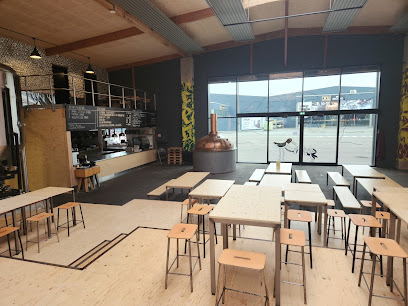
Suppugarðurin
Discover authentic Japanese ramen in Tórshavn at Suppugarðurin – where tradition meets flavor in every bowl.

Muntra
Experience authentic Faroese cuisine at Muntra in Fuglafjørður—where fresh local ingredients meet breathtaking coastal views.

Seven
Discover authentic Chinese flavors at Seven in Tórshavn – where culinary tradition meets modern dining.

HAPS Burgerbar
Experience authentic Faroese flavors at HAPS Burgerbar, Tórshavn's favorite spot for gourmet burgers and local delicacies.

Number 1 Pizza
Discover delicious takeout pizza at Number 1 Pizza in Tórshavn – a must-visit for pizza lovers exploring the stunning Faroe Islands.

Markets, malls and hidden boutiques
FK Super Market
Explore FK Super Market in Miðvágur: Your destination for local delicacies, fresh produce, and everyday essentials in the heart of the Faroe Islands.

Bónus
Explore Bónus in Tórshavn for a unique shopping experience filled with local products and affordable prices, perfect for tourists.

PE Sørvágur
Explore PE Sørvágur, a charming grocery store in the heart of Sørvágur, offering local delights and essentials for your Faroese adventure.

Á Landavegur
Discover the best of local and international flavors at Á Landavegur, Tórshavn's premier supermarket for your culinary adventures.

Á Handil
Experience the flavors of the Faroe Islands at Á Handil, Tórshavn's premier grocery store featuring local and international products.

Á við Norðskála
Discover the charm of Á við Norðskála in Oyrarbakki, where local flavors and friendly service await every visitor.

Rúsdrekkasøla Landsins - Miðvágur
Explore Rúsdrekkasøla Landsins in Miðvágur for a taste of unique local beers and wines, representing the spirit of the Faroe Islands.
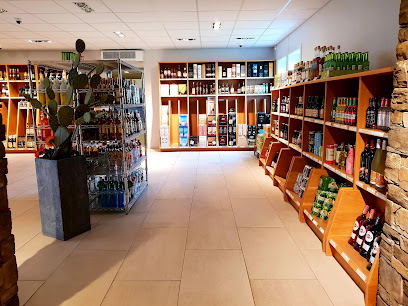
Á handil
Explore the flavors of the Faroe Islands at Á handil, Tórshavn's top grocery store for local and international delicacies.

Inn við Grønlandsvegin
Discover the best of local and international groceries at Inn við Grønlandsvegin in Tórshavn, the perfect stop for your culinary needs.

Á Sandoyggin
Discover the heart of Skopun at Á Sandoyggin, where local flavors and friendly faces await to enrich your Faroe Islands experience.

Ryggstein Sigarir
Explore Tórshavn's premier cigar shop, Ryggstein Sigarir, offering exquisite cigars and expert advice in a cozy atmosphere.

Ullvøruhúsið
Discover exquisite Faroese fashion at Ullvøruhúsið, Tórshavn's premier clothing store for unique woolen garments and accessories.

Á Shop
Discover the charm of Á Shop in Vágur, your go-to supermarket for local delights and fresh produce in the stunning Faroe Islands.

Fjord by Suffía Nón
Explore Fjord by Suffía Nón for exquisite handcrafted gifts and souvenirs that capture the essence of the Faroe Islands' rich culture.

Duty Free Fae
Discover exceptional savings at Duty Free Fae, the premier duty-free store in Sørvágur, Faroe Islands, offering a variety of unique local products and more.

Essential bars & hidden hideouts
Irish Pub Torshavn
Discover the heart of Irish culture in Torshavn with hearty meals, vibrant drinks, and live music at the Irish Pub.

Fiskastykkið // Úti á Gjógv
Discover the culinary treasures of the Faroe Islands at Fiskastykkið in Sandavágur, where fresh local ingredients meet stunning views.

Sirkus Bar
Sirkus Bar in Tórshavn offers a lively ambiance with creative cocktails and local charm, making it an essential stop for nightlife lovers in the Faroe Islands.

Mikkeller Tórshavn
Experience the vibrant craft beer culture at Mikkeller Tórshavn, where local charm meets innovative brewing in the heart of the Faroe Islands.
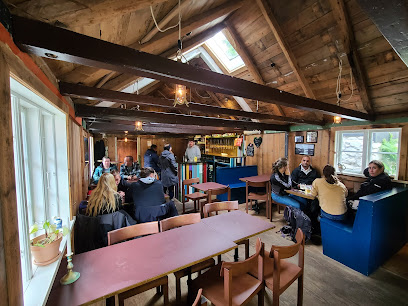
Café Zorva
Discover the culinary delights of Café Zorva, a charming brasserie in Sørvágur, where local flavors meet breathtaking views in the Faroe Islands.

OY Brewing
Discover the best of Faroese craft brewing at OY Brewing in Tórshavn, where local ingredients meet flavorful beers and delicious bar food.

Smiðjan
Discover the flavors of the Faroe Islands at Smiðjan, a cozy restaurant in Miðvágur serving exquisite local dishes.

Resturant Cafe Pollastova
Experience the flavors of the Faroe Islands at Café Pollastova, where local ingredients meet stunning natural beauty in Sørvágur.

Roykstovan
Discover the vibrant nightlife of Klaksvík at Roykstovan, where friendly locals and a lively atmosphere await you in the heart of the Faroe Islands.

Glitnir
Experience Tórshavn's vibrant nightlife at Glitnir, where fine drinks and friendly faces come together in the heart of the Faroe Islands.

Blábar
Experience the vibrant nightlife of Tórshavn at Blábar, where live music, cozy vibes, and delicious drinks await you.

Tórshøll
Experience the best of Tórshavn at Tórshøll, a cozy bar offering local drinks, cultural events, and stunning views of the Faroe Islands.

Maverick
Explore Klaksvík's vibrant nightlife at Maverick, a local bar known for its cozy atmosphere and exceptional selection of local beers.

Landskrona Sports Bar
Experience the vibrant nightlife and sports culture at Landskrona Sports Bar in Tórshavn, the gem of the Faroe Islands.

Bjórkovin, the Beer Hub
Experience the best of craft beer at Bjórkovin, Tórshavn's vibrant beer hub offering a unique selection of local and international brews.

Local Phrases
-
- HelloHallo
[ha-loh] - GoodbyeFarvæl
[far-veyl] - YesJa
[yah] - NoNei
[ney] - Please/You're welcomeVælkomin
[vel-ko-min] - Thank youTakk fyri
[tahk fy-ree] - Excuse me/SorryFyrigev mær
[fee-ree-ye-ve mye-ar] - How are you?Hvussu gongur tú?
[kvoos-so gon-goor too] - Fine. And you?Gott. Og tú?
[got oh too] - Do you speak English?Talar tú enskt?
[tah-lar too enskt] - I don't understandEg skilji ikki
[yeh skeel-yee ih-kee]
- HelloHallo
-
- I'd like to see the menu, pleaseEg vil síggja menu, vænta væl
[yeh vil see-ya menu, vanta veyl] - I don't eat meatEg eti ikki kjøt
[yeh eh-tee ih-kee chyut] - Cheers!Skál!
[skowl] - I would like to pay, pleaseEg vil gjalda, vænta væl
[yeh vil yal-da, vanta veyl]
- I'd like to see the menu, pleaseEg vil síggja menu, vænta væl
-
- Help!Hjálp!
[hyawlp] - Go away!Far burtur!
[far bur-tur] - Call the Police!Ring til løgregluna!
[reeng teel loo-gree-gloo-na] - Call a doctor!Ring til ein læknari!
[reeng teel ain layk-na-ree] - I'm lostEg er týndur
[yeh air teun-door] - I'm illEg er sjúkur
[yeh air shoo-koor]
- Help!Hjálp!
-
- I'd like to buy...Eg vil keypa...
[yeh vil key-pa] - I'm just lookingEg er bara at síggja
[yeh air bara at see-ya] - How much is it?Hvat kostar tað?
[kvaht kohs-tahr tah] - That's too expensiveTað er ov dyrt
[tah air ohv deert] - Can you lower the price?Kanst tú seta prísin niður?
[kanst too seta prees-in knee-thoor]
- I'd like to buy...Eg vil keypa...
-
- What time is it?Hvat er klokkan?
[kvaht air klohk-an] - It's one o'clockTað er eitt
[tah air ayht] - Half past (10)Hálvt tíggju
[howlt tee-yoo] - MorningMorgun
[mor-goon] - AfternoonEftirmiðdagur
[eft-er-mee-thah-goor] - EveningKvøld
[kvoold] - YesterdayÍ gjár
[ee chow-ar] - TodayÍ dag
[ee dah] - TomorrowÁ morgun
[ow mor-goon] - 1Eitt
[ayht] - 2Tvær
[tvaer] - 3Tríggjar
[tree-gyar] - 4Fýra
[foo-ee-ra] - 5Fimm
[feem] - 6Seks
[seks] - 7Sjey
[shay] - 8Átta
[ow-tha] - 9Níggju
[nee-yoo] - 10Tíggju
[tee-yoo]
- What time is it?Hvat er klokkan?
-
- Where's a/the...?Hvar er ein...?
[kvar air ain] - What's the address?Hvat er heimilisoyggjan?
[kvaht air hay-mee-lee-soy-gyan] - Can you show me (on the map)?Kanst tú vísa mær (á kortinum)?
[kanst too vee-sa mye-ar oh kort-in-um] - When's the next (bus)?Nær kemur næsti (bussur)?
[ny-ar keh-moor nay-sti boos-sur] - A ticket (to ....)Eitt miða (til ....)
[ayht mee-tha til]
- Where's a/the...?Hvar er ein...?
History of Sandavágur
-
Sandavágur's history stretches back to the Viking Age, where it was a significant settlement. Archaeological findings, including a rune stone discovered in 1917, attest to the town's ancient roots. The rune stone, inscribed with the name of Torkil Onundarson, is believed to date back to the 13th century, indicating the presence of early Norse settlers.
-
One of the most famous historical artifacts in Sandavágur is the Sandavágur Runestone. Discovered in the early 20th century, the stone bears an inscription mentioning Torkil Onundarson from Rogaland, Norway. This inscription provides valuable insight into the Viking heritage of the Faroe Islands and emphasizes Sandavágur's historical significance.
-
The Church of Sandavágur, built in 1917, stands as a prominent landmark with its distinctive red roof and whitewashed walls. It houses the famous Sandavágur Runestone and serves as a testament to the town's rich cultural heritage. The church is an architectural gem and a focal point for community gatherings and religious ceremonies.
-
During World War II, the Faroe Islands, including Sandavágur, were occupied by British forces to prevent a German invasion. The presence of British troops brought significant changes to the daily lives of the islanders. Sandavágur, like many other Faroese towns, played a role in supporting the war effort through fishing and other essential activities.
-
The Battle of Sandavágur in 1629 was a notable event in the town's history. This conflict involved local Faroese forces defending against a pirate raid. The battle is remembered for the bravery of the local inhabitants who successfully repelled the invaders, showcasing the resilience and courage of the Faroese people.
-
In recent decades, Sandavágur has seen considerable development and modernization. The town has embraced tourism and now offers various amenities for visitors, including museums, guided tours, and cultural events. Despite these changes, Sandavágur has managed to preserve its historical charm and continues to be a vibrant community with deep-rooted traditions.
Sandavágur Essentials
-
Sandavágur is located on the island of Vágar in the Faroe Islands. The nearest airport is Vágar Airport (FAE), which is just a 10-minute drive from Sandavágur. Direct flights to Vágar Airport are available from several European cities including Copenhagen, Reykjavik, and Edinburgh. From the airport, you can take a taxi or rent a car to reach Sandavágur. Public bus services are also available, connecting the airport to Sandavágur and other parts of the island.
-
Sandavágur is a small town, and most of its attractions are within walking distance. For exploring the surrounding areas, you can use public buses operated by Strandfaraskip Landsins, the national transport company. Taxis are also available but can be expensive. Renting a car provides the most flexibility, especially if you plan to explore other islands. Bicycles can be rented for a more eco-friendly way to get around and enjoy the scenic landscapes.
-
The official currency of the Faroe Islands is the Faroese króna (DKK), which is pegged to the Danish krone. Credit and debit cards are widely accepted in hotels, restaurants, and shops. However, it is advisable to carry some cash for smaller establishments and remote areas. ATMs are available in Sandavágur, but it can be wise to withdraw cash at the airport or in larger towns to ensure you have enough for your trip.
-
Sandavágur is generally a very safe destination with low crime rates. However, it is always prudent to take standard precautions such as not leaving valuables unattended and being aware of your surroundings, especially in crowded places. There are no specific high-crime areas targeting tourists. The local community is friendly and welcoming, making it a safe place for visitors.
-
In case of emergency, dial 112 for police, fire, or medical assistance. The nearest medical facility is located in Miðvágur, about a 10-minute drive from Sandavágur. It is advisable to have travel insurance that covers medical emergencies. For minor health issues, there is a pharmacy in the town where you can purchase over-the-counter medications. Always keep the contact information of your country's embassy or consulate handy.
-
Fashion: Do dress in layers and wear weather-appropriate clothing, as the weather can be unpredictable. Avoid overly casual or revealing attire. Religion: Do respect local customs and traditions, especially when visiting churches. Public Transport: Do be punctual and respectful on public transport. Don’t eat or drink on buses. Greetings: Do greet locals with a friendly 'Hallo' or 'Góðan dagin'. A handshake is also acceptable. Eating & Drinking: Do try local dishes such as skerpikjøt (dried mutton) and ræst fiskur (fermented fish). Don’t refuse food or drink offerings, as it may be considered impolite.
-
To experience Sandavágur like a local, visit the Sandavágs Kirkja, a historic church known for its distinctive architecture and stained glass windows. Take a walk along the scenic coastal paths and enjoy the breathtaking views of the fjords and mountains. Engage with locals at the local café or during community events, as they are often eager to share insights about their town. Don’t miss the chance to see the Sandavágur Stone, an ancient runestone with inscriptions dating back to the Viking Age.
Trending Landmark in Sandavágur
-
Kirkjubømúrurin
-
Múlafossur Waterfall
-
Gjógv Natural Harbour
-
The Nordic House
-
Skansin
-
View on Mullafossur and Gasadalur village
-
The Seal Woman (Kópakonan)
-
Trælanípa
-
The National Gallery of The Faroe Islands
-
Tjóðsavnið (Faroe Islands National Museum)
-
Kallur Lighthouse
-
Slave Cliff (Lake Above the Ocean)
-
Bøsdalafossur Waterfall
-
Giljanes Hostel & Campsite
-
Klakkur
Nearby Cities to Sandavágur
-
Things To Do in Miðvágur
-
Things To Do in Sorvagur
-
Things To Do in Kvívík
-
Things To Do in Vestmanna
-
Things To Do in Hvalvík
-
Things To Do in Tórshavn
-
Things To Do in Argir
-
Things To Do in Strendur
-
Things To Do in Runavík
-
Things To Do in Gøta
-
Things To Do in Nólsoy
-
Things To Do in Klaksvik
-
Things To Do in Tvøroyri
-
Things To Do in Vágur
-
Things To Do in Seydisfjordur







